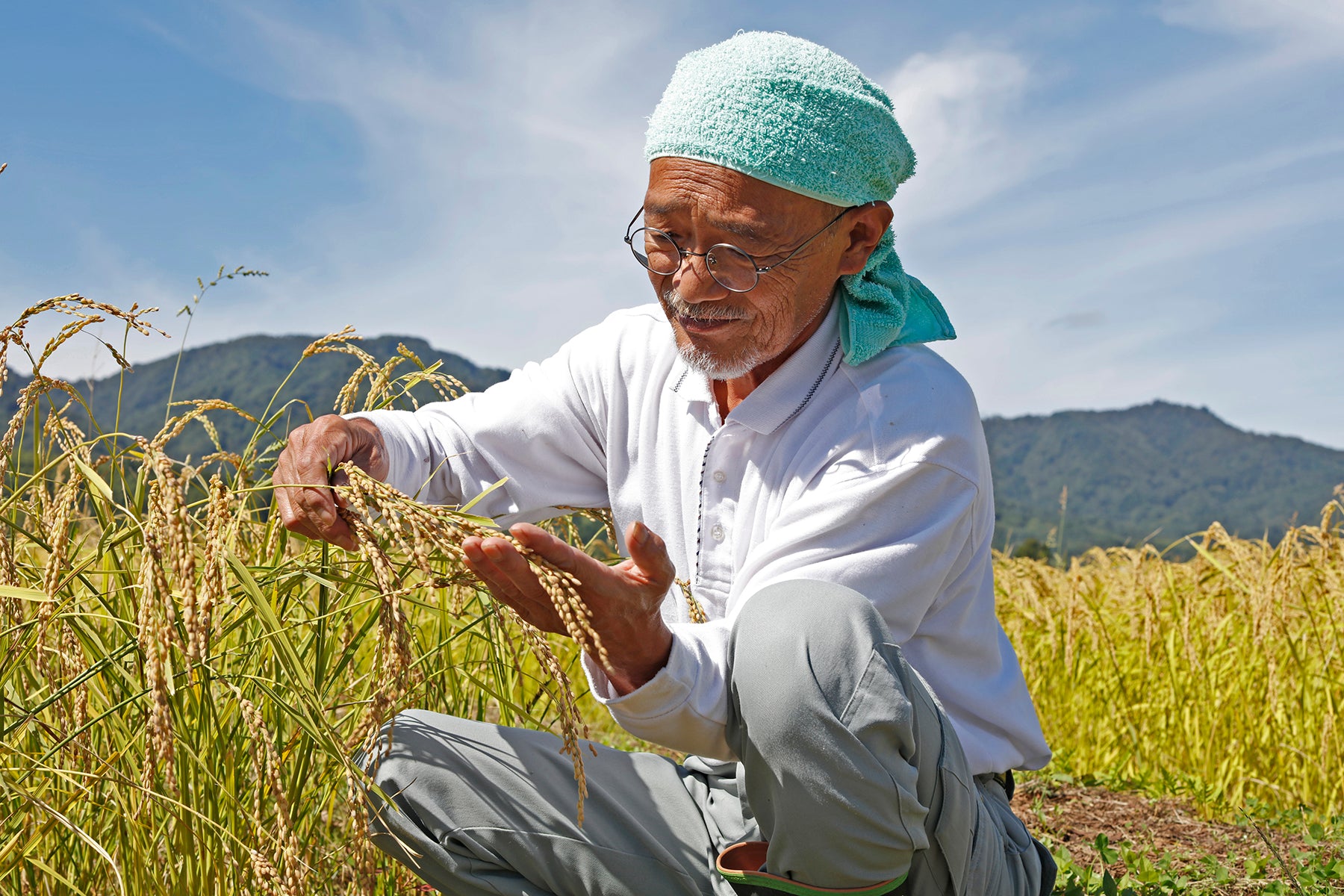
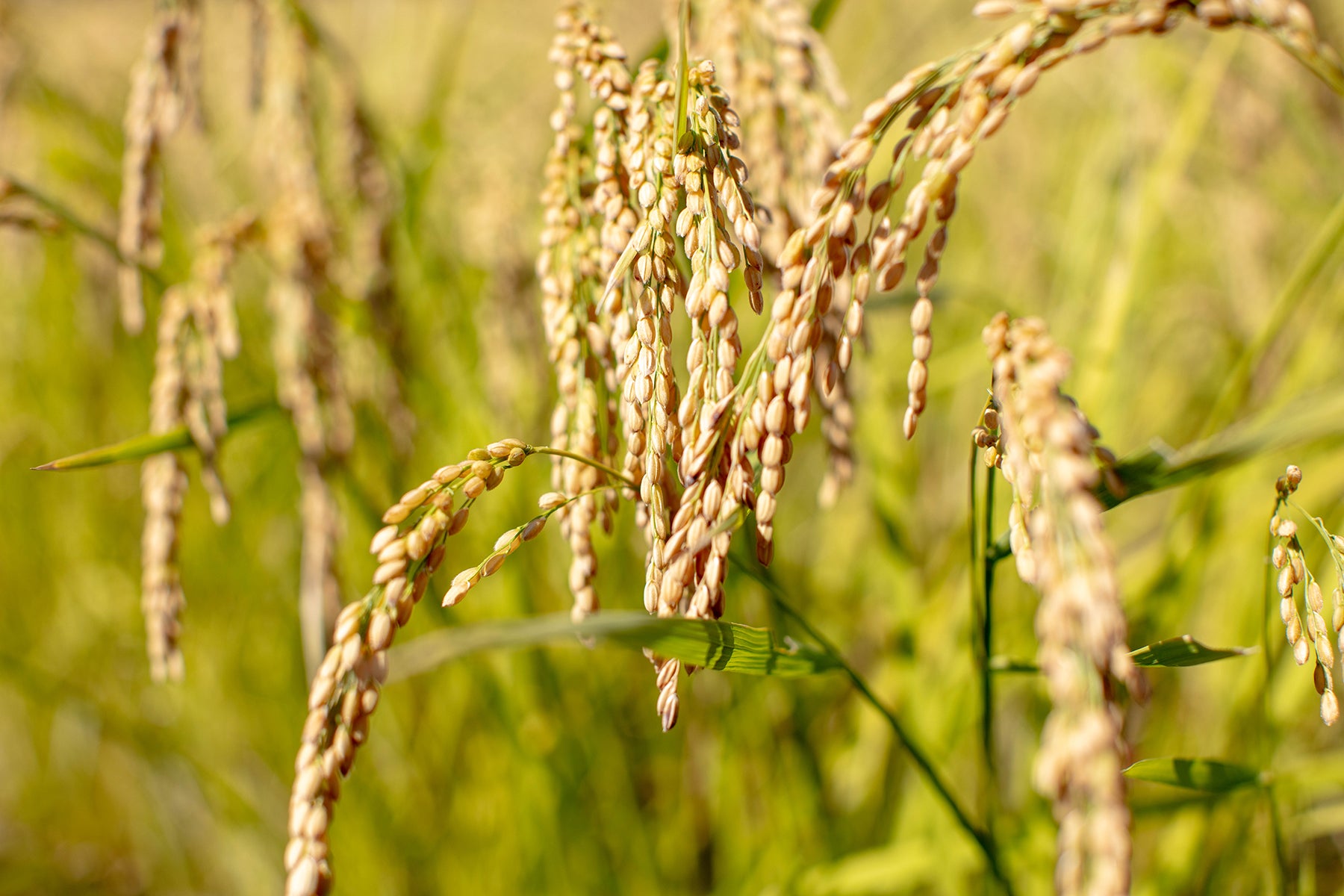
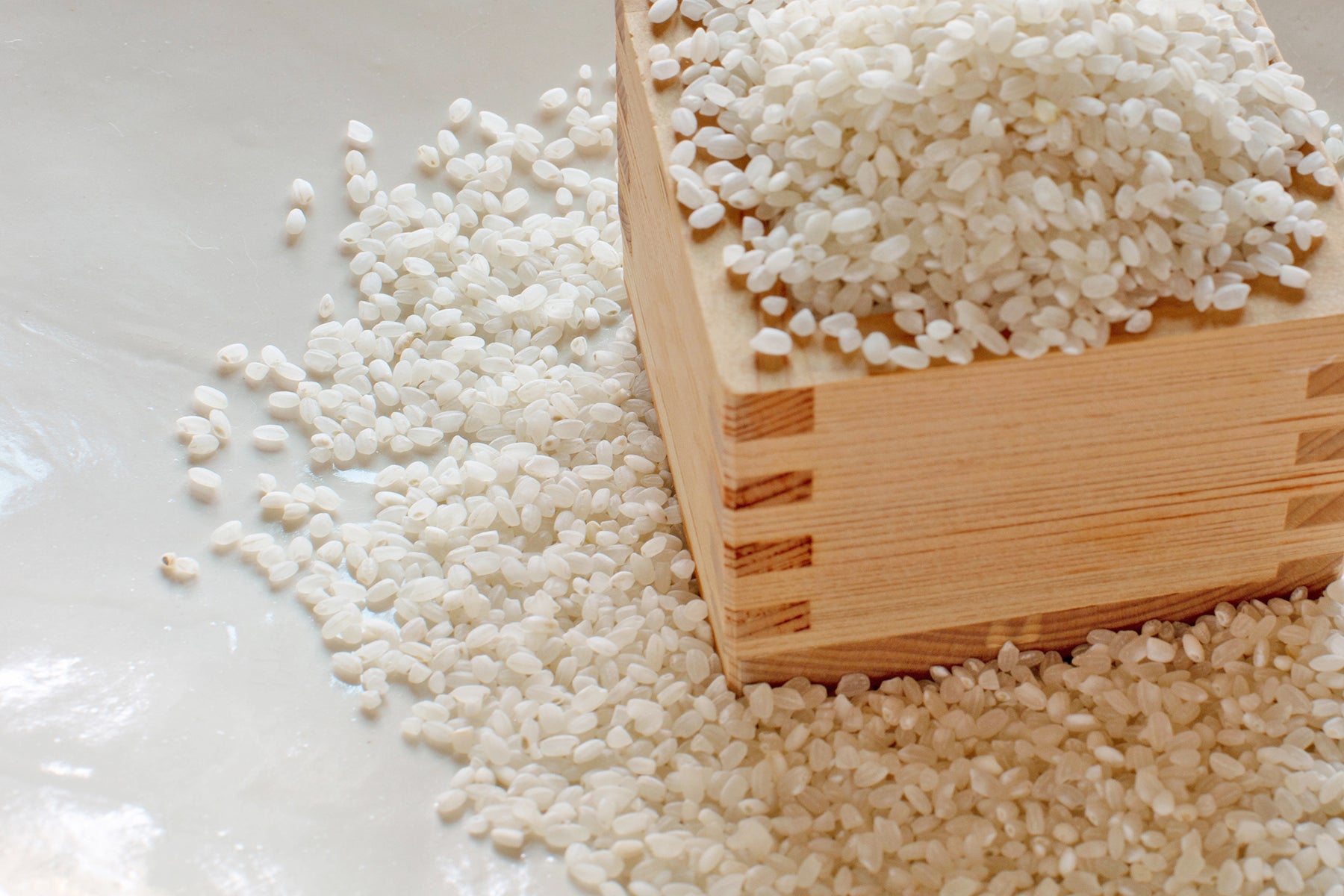

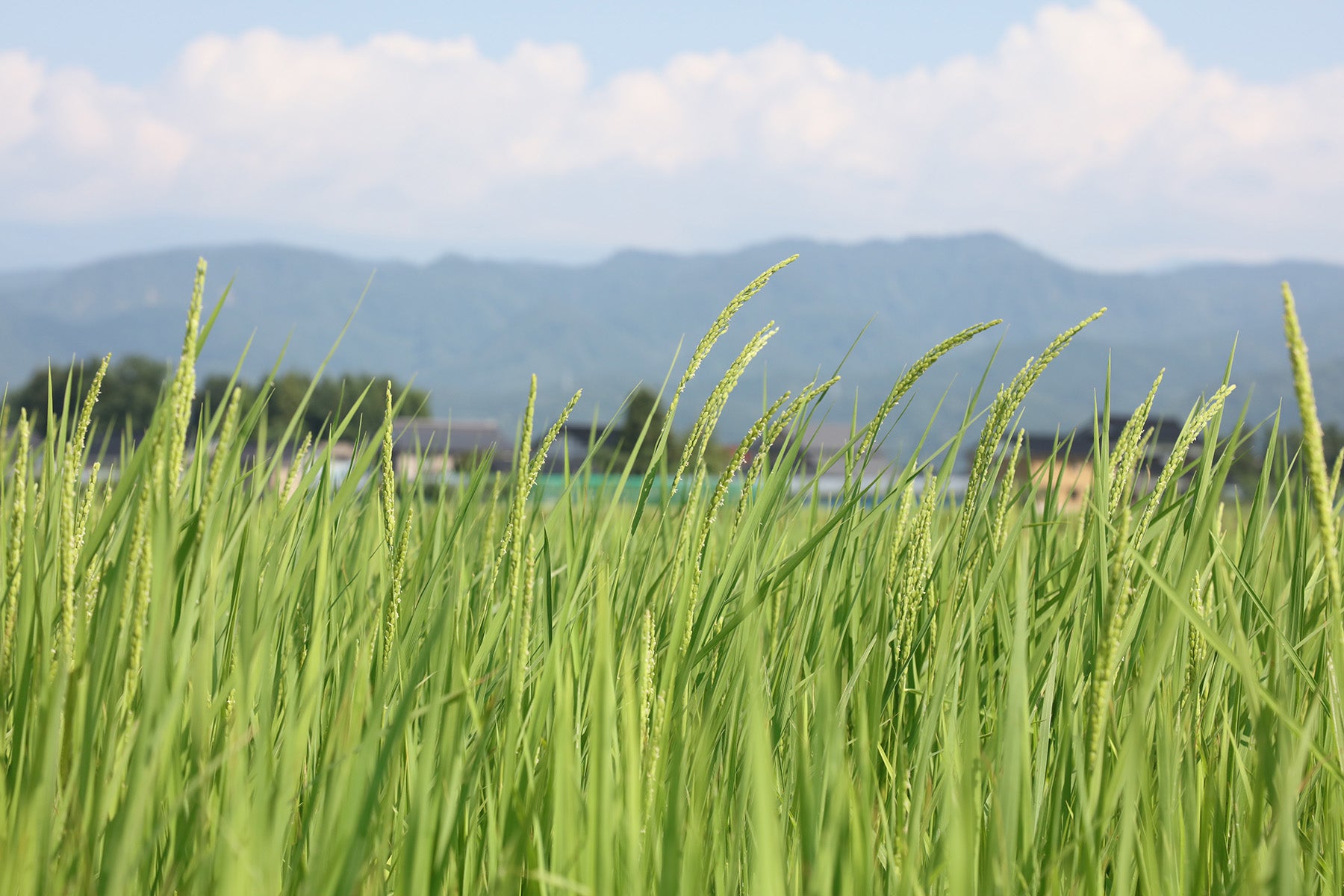
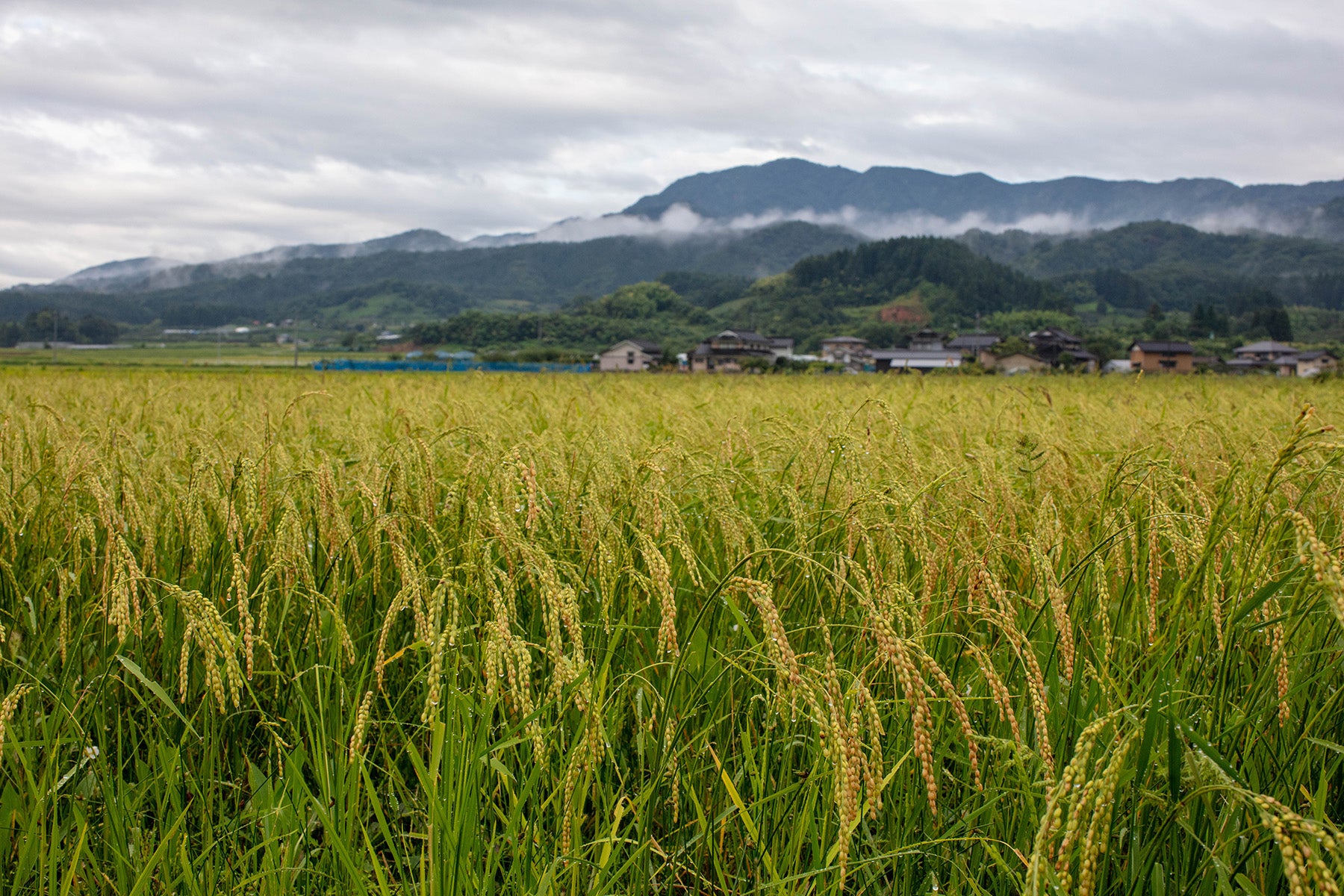
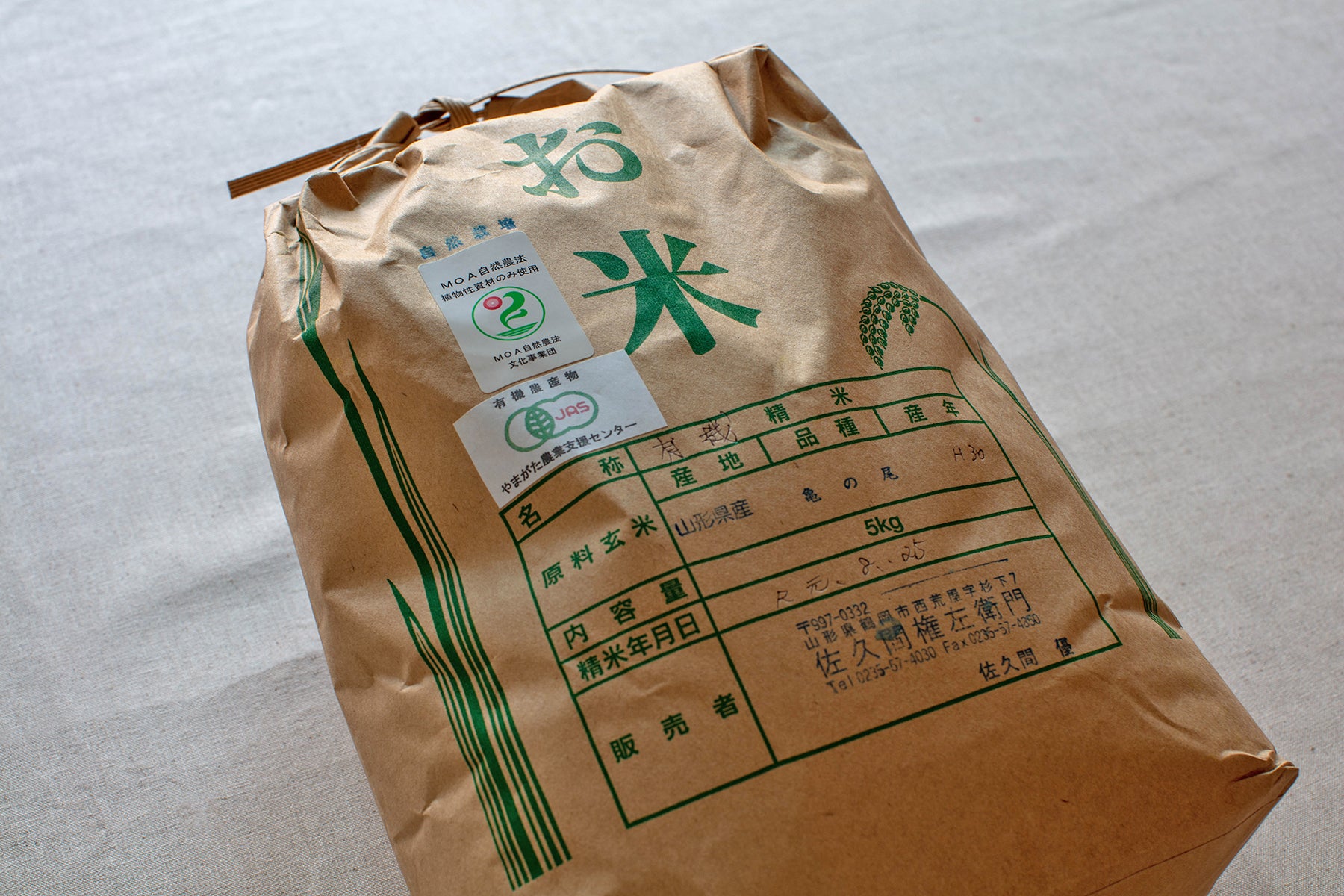
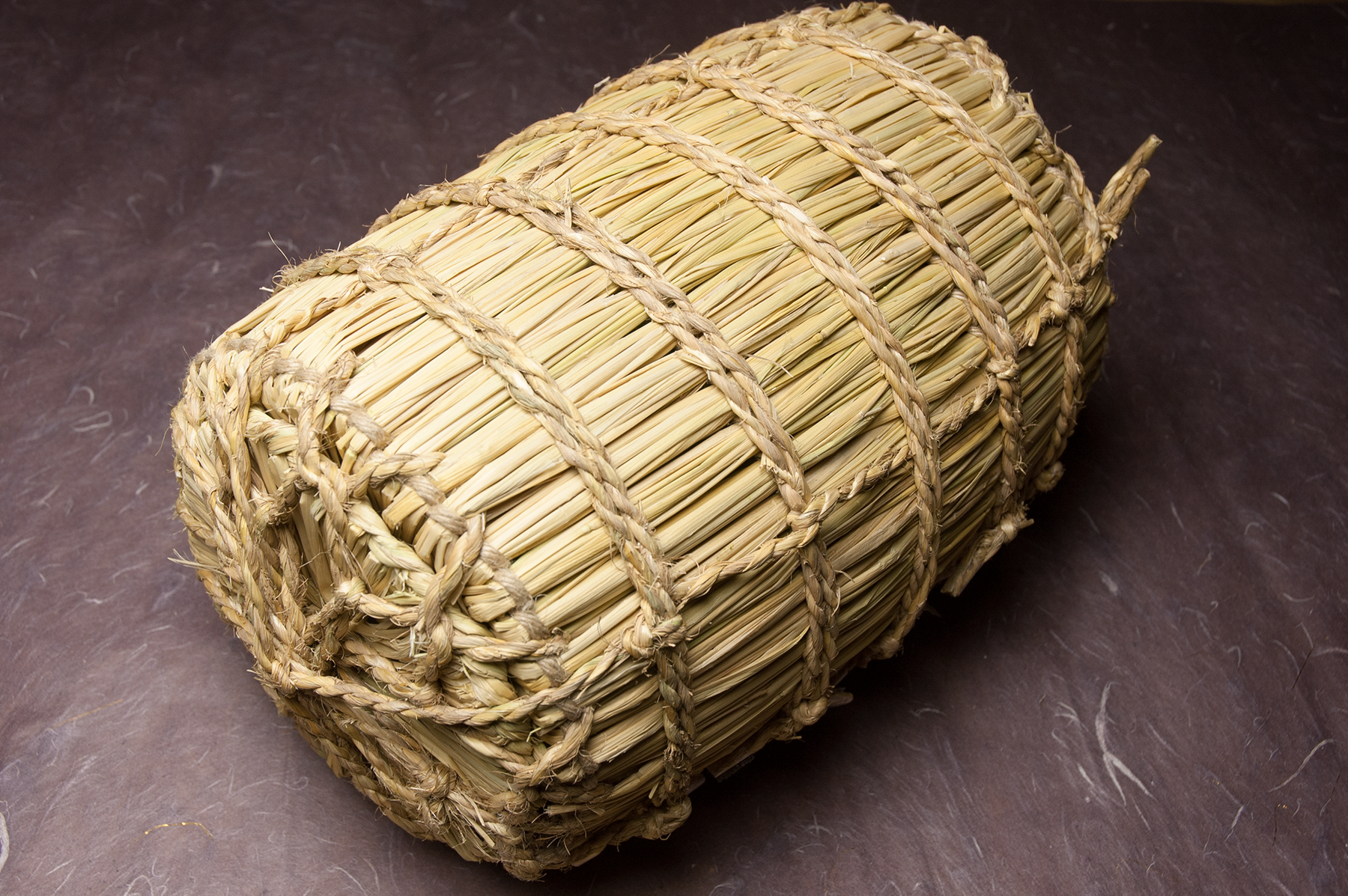
【山形県/佐久間権左衛門】知る人ぞ知る幻の米、亀の尾。それを自然栽培(無農薬無肥料)で育てた希少米。玄米10kgでお届けします。
※完売につき、2026年の新米販売までお待ちください。
未知の領域に飄々と挑戦する鶴岡魂

「亀の尾」という米の品種をご存じだろうか。コシヒカリのルーツとされる良食味が特徴で、ササニシキ、あきたこまち、ひとめぼれ、はえぬきなど、大半の米の先祖にあたる。現在ではわずかに栽培される程度で、ほとんど市場に出回っていない。
一方、「女鶴」という味の良いもち米が山形県酒田市で古くから栽培されていた。あまりのおいしさに、明治初期には皇室に献上されていたという。しかし、栽培が難しく、収量が少なかったため、農家から敬遠され、「女鶴を超えるもち米はない」という伝説を残して、40年ほど前にほぼ全滅した。
「亀と鶴……、欲しい!」、大胆にもそんな発想で、希少な「幻の米」を復活させたのが佐久間優さんだ。もともと栽培が難しい二つの米を無農薬で肥料すら与えず、手塩にかけて育て上げる。おもしろがる精神で幾多の困難を克服し続け、佐久間さんのあくなきチャレンジは続く。
種とともに生きる

育て方は天気次第です。稲の生育にベストな方法を自然の天候の中で選んでいかなくてはいけません。数字ではなく経験が大切です。なるべく多くの方法を引き出しに用意して、「この天気だったらこの手かな」と引っ張り出して使います。方法論はたくさん持っている方がいいと思います。
稲が育つ養分を根っこが吸収して、1/3は稲の葉っぱや茎に、1/3は実に行き渡り、残りの1/3は新陳代謝をして排出されます。その老廃物も土の中で養分になります。イトミミズやドジョウなど、土や水の中の生き物も死ねば次の年の養分になり、稲が生きていく元になります。
穂が熟して生きている状態で稲刈りをしますが、稲という植物を切り取って殺してしまうわけではありません。種として取って、また来年もこの田んぼに植えて、子孫を残すためにやっているのです。そうやって収穫した恵みを頂戴して我々農家が生きていく。そんな風に思っています。
お勧めする理由
◉ 農薬も肥料も使わない自然栽培
◉ 東の亀の尾、西の朝日といわれたほどの歴史ある希少品種
◉ 餅系のお米ではないので、アレルゲンがない(餅系のコシヒカリなどはアレルゲンあり)
| 商品名 | 有機JAS亀の尾 |
| 栽培方法 | 自然栽培(無農薬、無肥料) |
| 認証 | 有機JAS認証、自然農法認証(自然栽培) |
| 販売 | なくなり次第終了、新米は10月中旬以降 |
| 販売者 | 佐久間権左衛門 |
| 販売者住所 | 山形県鶴岡市西荒屋字杉下7 |

オプションを選択








【山形県/佐久間権左衛門】知る人ぞ知る幻の米、亀の尾。それを自然栽培(無農薬無肥料)で育てた希少米。玄米10kgでお届けします。
セール価格¥10,000
通常価格

